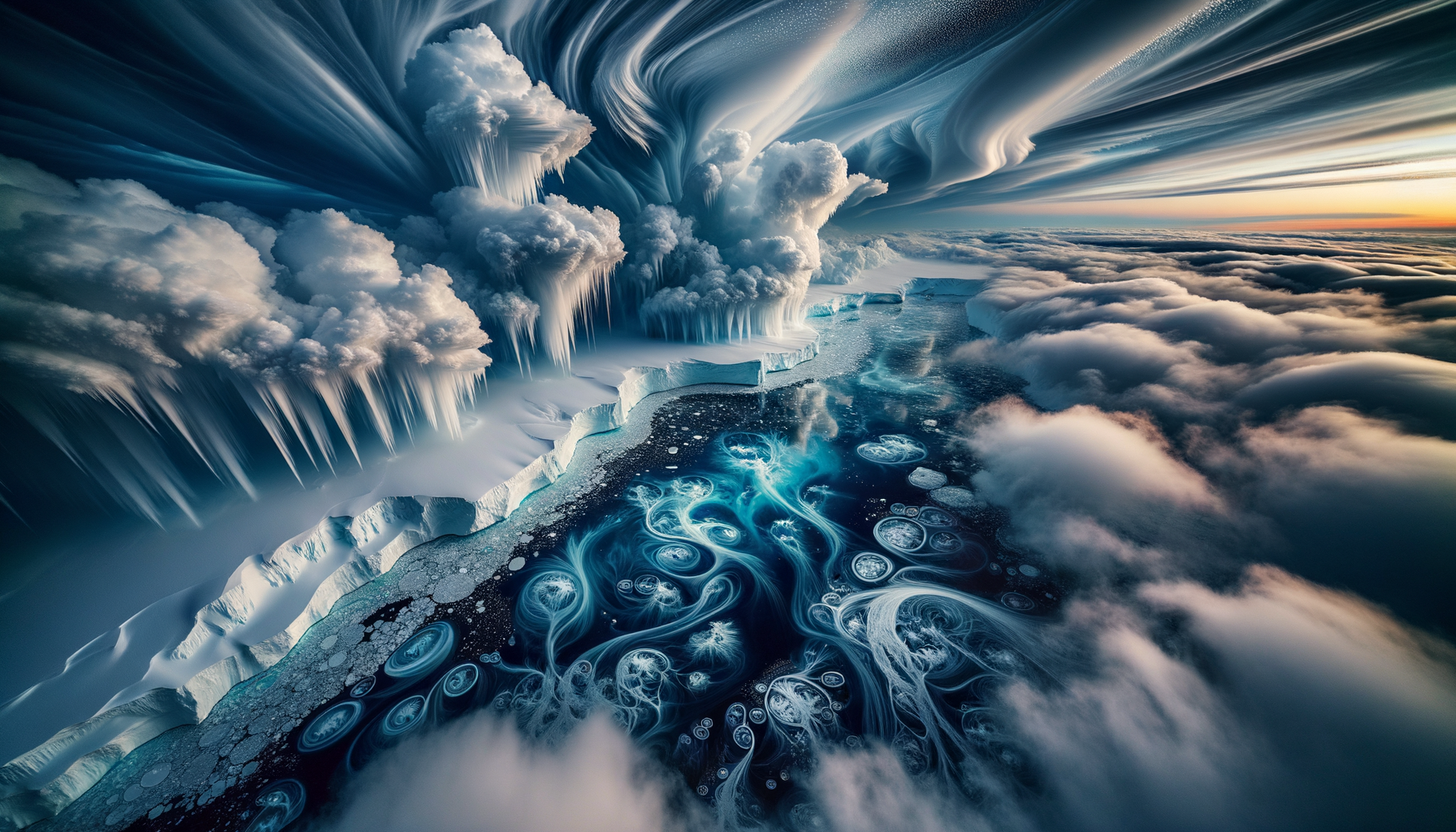Not Cotton Candy: The Tiny Sugars Steering Antarctic Clouds
Short answer: No, the clouds over Antarctica are not made of cotton-candy sugar. But—here’s the irresistible twist—researchers have just shown that traces of natural sugar molecules floating up from the ocean can decide whether those clouds snow, shine, or glare sunlight back to space. Keep reading to learn how a sprinkle of biology rewrites what we know about the coldest skies on Earth.
1. The Sweet Surprise Scientists Really Found
In July 2025 a German-Norwegian team (Leipzig’s TROPOS + Arctic University of Norway) published a peer-reviewed study in Environmental Science & Technology showing:
- Marine polysaccharides—long chains of sugar produced by fungi and microscopic sea creatures—
- become the dominant ice-nucleating particles (INPs) in many Southern-Ocean clouds between –15 °C and –20 °C,
- outranking mineral dust or soot, which are scarce this far south.
These sugar chains act like tiny matchsticks, letting super-cold cloud droplets snap into ice crystals. More ice crystals mean thicker clouds, more reflected sunlight, and a higher chance of snowfall.
2. So Why Did “Sugar Clouds” Make Headlines?
The original German tabloid story shouted that Antarctic clouds “basically consist of sugar” and that without those sugars “there would be no precipitation anymore.” Those claims spice up the science—but go well beyond it.
Our fact-check shows:
| Claim in tabloid | Verdict | Evidence |
|---|---|---|
| Clouds “consist” of sugar | Overstated | Clouds remain almost all air + water/ice. Sugary INPs are trace additives. NASA FAQ |
| No sugars → no rain | False | Warm-rain processes don’t need ice at all; other INPs also exist. |
| Polysaccharides dominate at –15 °C | Supported | Matches 2025 study. |
| Dust INPs scarce near Antarctica | Supported | Multiple studies agree. |
3. Inside the Discovery: From Ship Deck to Cloud Chamber
- Clue on deck – During the 2017 Polarstern expedition PS106, chemist Dr. Sebastian Zeppenfeld noticed elevated glucose in Arctic seawater samples.
- Laboratory sleuthing – Back in Leipzig, the team froze artificial clouds inside a chilled wind tunnel. Add marine polysaccharides at –16 °C? Ice exploded everywhere.
- Global puzzle piece – Satellite and aircraft data confirmed that over the pristine Southern Ocean, these sugars are plentiful compared with dust or soot.
Result: A new “hierarchy” of ice starters emerged—
- < –20 °C: mineral dust still king
- –20 °C → –10 °C: polysaccharide sugars rule
-
–10 °C: specific proteins take over
4. Why a Pinch of Sugar Matters for Climate
- Cloud brightness: More ice crystals make clouds whiter, bouncing sunlight back to space and cooling the planet.
- Snowfall timing: Ice-rich clouds drop snow sooner; that affects sea-ice growth and ocean circulation.
- Future emissions: If humans cut soot and dust pollution, biological INPs (like these sugars) may become even more influential.
Think of Earth’s atmosphere as a recipe: remove one ingredient (industrial dust), and the flavor of the remaining spices (natural sugars) gets stronger.
5. What We Still Don’t Know
- Quantity: Exactly how much polysaccharide reaches cloud height each season?
- Climate feedbacks: Will warming oceans change how much sugar marine microbes produce?
- Global reach: Are similar sugars steering clouds above the North Pacific or Amazon basin?
The next round of Antarctic and open-ocean expeditions will haul in seawater, culture fungi, and chase clouds by drone to tighten these numbers.
6. Takeaways in Plain English
• Clouds are not candy. They’re mostly air and water; sugars are microscopic but mighty influencers.
• The new study is solid, but headlines claiming “clouds consist of sugar” oversell it.
• Biology meets climate. Marine life quietly supplies ice seeds that shape weather and reflect sunlight.
• Less pollution ≠ cloudless skies. Nature has backup systems—like fungal sugars—to keep clouds and rain alive.
Trust but Verify — Our Process
- Read the original German article.
- Cross-checked each claim against:
- 2025 peer-reviewed paper (ES&T)
- NASA and AGU cloud-physics FAQs
- Prior PS106 expedition datasets
- Marked every statement as Supported / Overstated / False.
- Built this narrative separating confirmed facts from hype.
- All source links appear above for readers to inspect themselves.
Bottom Line
The Antarctic sky isn’t a bowl of cotton candy—but it is sweeter than we ever imagined. Tiny sugar chains, spun up from the sea, now sit center stage in one of climate science’s frostiest mysteries.
